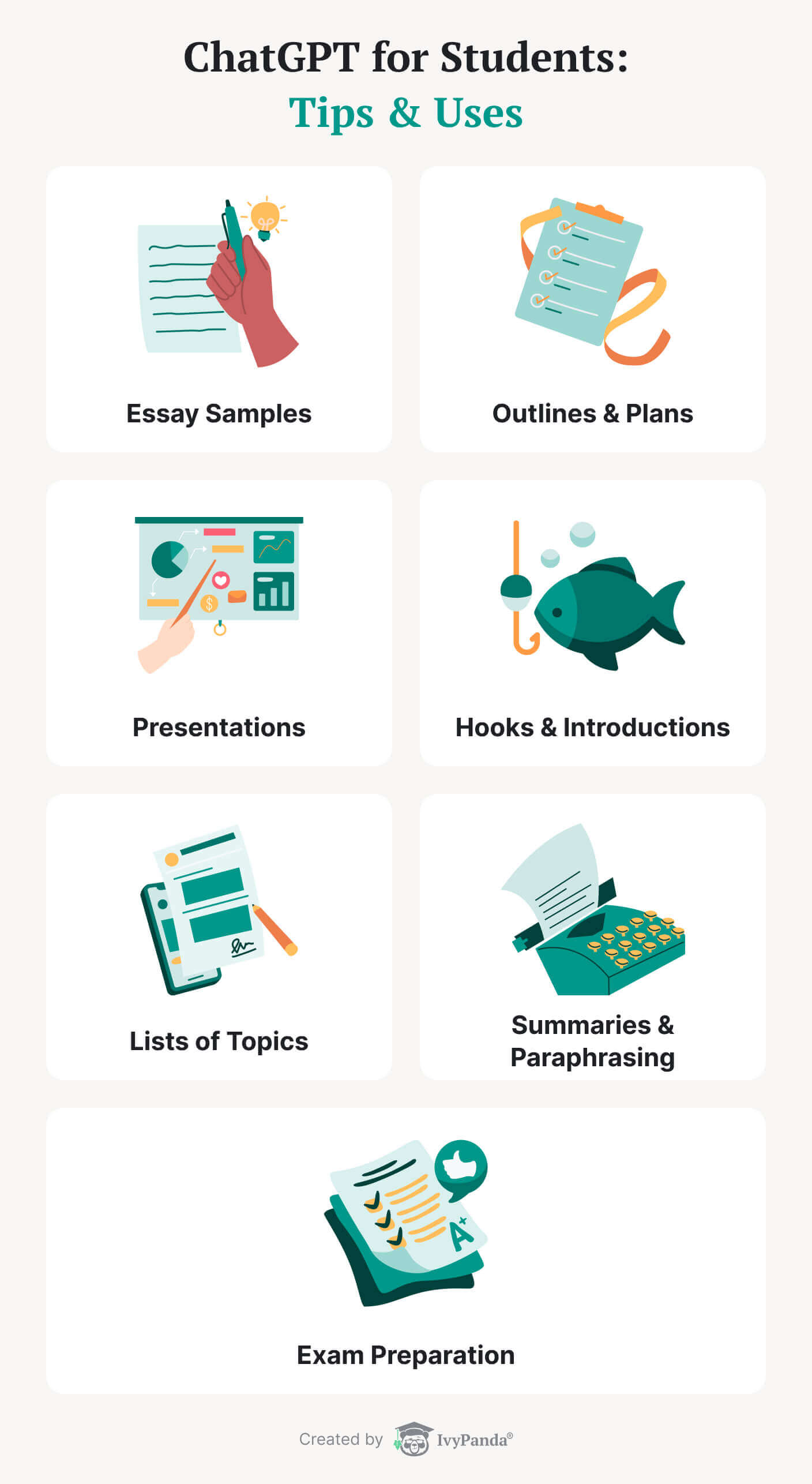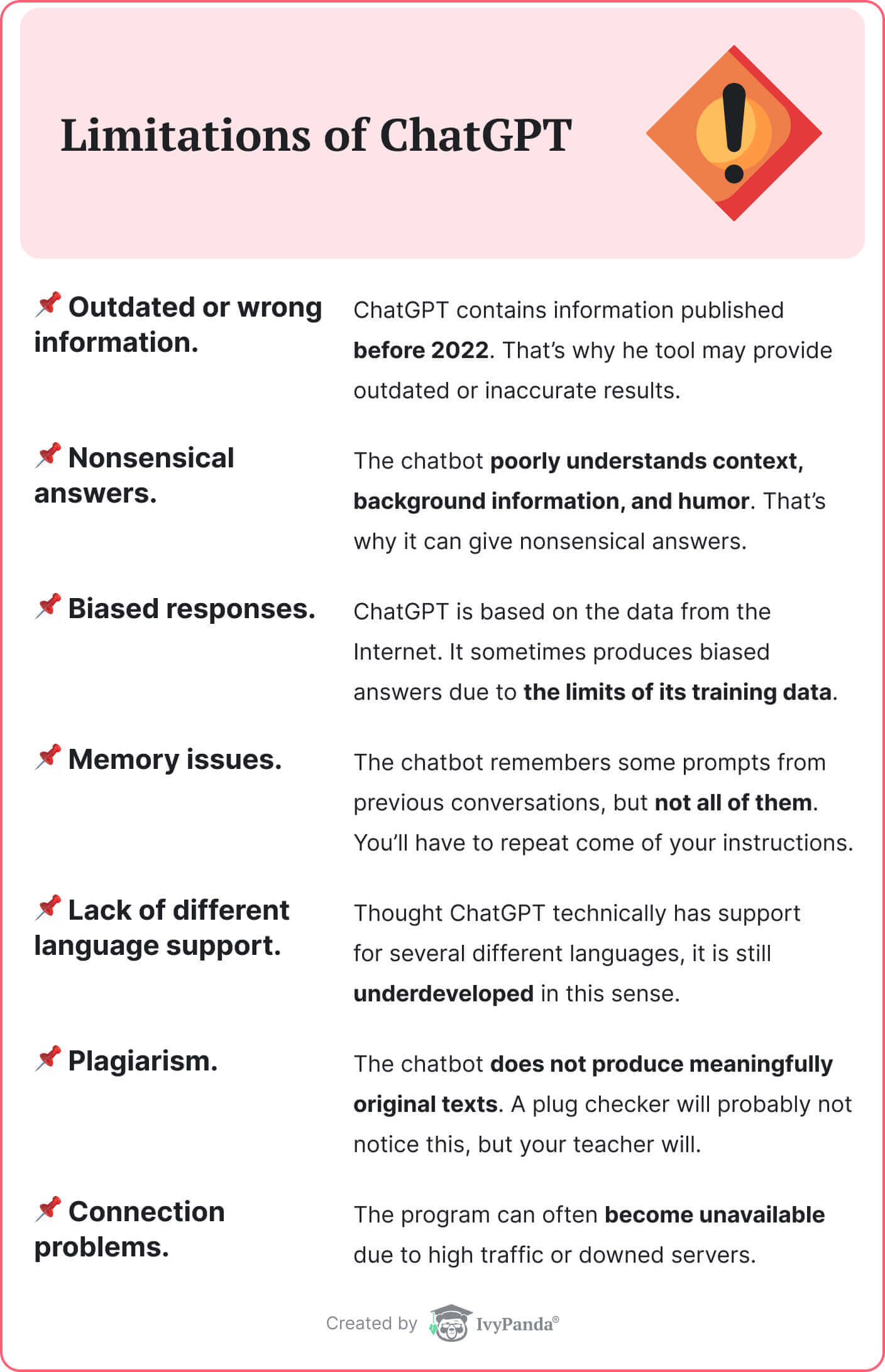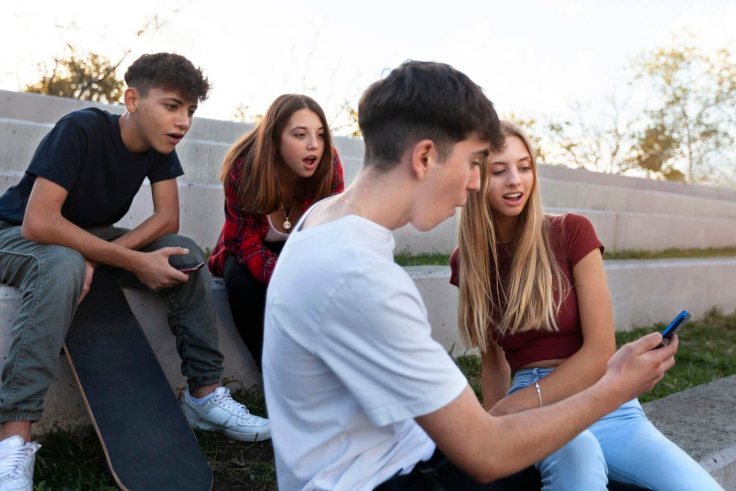If you follow the latest news in technology, you might have already heard about this latest innovation. Chat Generative Pre-Trained Transformer, or ChatGPT, amazed the computing community at large. This newest scientific marvel fascinates tech geeks, students, and many others all across the globe. And today, you will find out why!

This overview article will explain the different aspects of this technology, its significance, and its application. Our experts will also explore the current limitations of ChatGPT and why students, in particular, might be interested in checking out this tool.
✒️ ChatGPT 101
The questions of artificial intelligence have puzzled humanity’s greatest minds for the longest time. John McCarthy coined the term Artificial Intelligence (or AI) back in 1956. However, the concept has been a subject of discussion for much longer.
Since the advent of the first computer programs, people have asked, “Can a computer hold a conversation with us?”
This idea was often explored in many sci-fi novels and movies. Stories such as 2001 a Space Odyssey, Do Androids Dream of Electric Sheep?, and The Hitchhiker’s Guide to the Galaxy gave their own popular takes on AI. And until recently, it has been a purely fictional concept.
Nowadays, it’s looking as though machine intellect is becoming closer to reality than at any other point in history. This becomes apparent when looking at such programs as ChatGPT. Therefore, let us delve into why this revolutionary tech has everybody talking about it.
What Is ChatGPT?
ChatGPT is an experimental chatbot developed by the non-profit company OpenAI. This project is one of the many machine-learning experiments the organization has been conducting over the past few years. Altogether, OpenAI aims to make artificial intelligence a tool that improves people’s daily lives.
The chatbot was met with rave reviews and praise from AI experts and the general public alike. Its role is to simulate real human interaction through text generation. This technology can reimagine how people use search engines and solve elaborate problems.
ChatGPT stands above other chatbots due to the detailed and human-like answers to user requests. It’s currently the closest thing to real-life functioning AI available to the general public.
When Did ChatGPT Become Available?
OpenAI has been working on the GPT language model for a while. It runs the chatbot’s algorithms and functions, trained on massive volumes of data, such as books, articles, and websites posted online as of January 2022. Programmers have also applied human feedback to help the machine learn faster.
ChatGPT’s prototype first became available in November 2022 and attracted a remarkable number of impressed individuals. Even though the chatbot is unavailable in several countries, its user base rose to over 1 million in just a month. As of January 2023, the program enjoys over 100 million users. Experts estimate that this number will rise to 1 billion by the end of this year.
Despite the generous funding, OpenAI already considers monetizing ChatGPT for all clients. This is because of the astronomical costs of supporting its servers. Currently, the company has begun offering ChatGPT Plush for US customers at $20 a month.
Why Is Everyone Talking about ChatGPT?
This technology made the headlines as one of the first functioning AI chatbots. In the past, companies like Microsoft attempted to create something similar but were not as effective. As it stands, ChatGPT is one of the most successful chatbots, capable of remembering user prompts from previous conversations and learning in real-time.
People have already found many applications for this tool outside of asking questions. For example, ChatGPT has been asked to generate emails, code, and even academic papers for them. While most reviewers appreciate this technology, a substantial group worries about it being misused.
✅ Reasons to Use ChatGPT
Now that you know what this tool does, you might ask, “Why do people even need it anyway?” In reality, ChatGPT has many creative real-world applications. Unlocking the full span of its abilities takes just a little imagination. So far, people have been using the chatbot to:
However, this multifaceted tool has applications outside of business development or for fun. With time, ChatGPT can become a respectable and valuable tool at educational institutions.
🎓 ChatGPT in Education
The fact that schools and universities worldwide started banning ChatGPT shouldn’t come across as a surprise. Educators fear that students will use artificial intelligence as a substitute for studying. The high quality of work produced by the chatbot makes it hard to discern machine-generated text from human writing. This will allow students to cut corners and cheat without consequences.
This is why educational institutions rush to outright ban any use of the new tool. However, we at IvyPanda believe that this decision might be too radical. There’s no foolproof way to remove ChatGPT from the life of students completely. Additionally, barring them from technological progress can do more harm than good, hindering their development and digital literacy. Instead, we firmly believe that AI can become an excellent tool for both students and educators alike.
👨🎓 Uses of ChatGPT for Students
Teachers worry that a program that can finish a work in seconds will affect student productivity. It’s no question that some of them will use the chatbot unethically since there will always be those looking for new ways to cheat. However, a student using ChatGPT in such a manner would be making a grave mistake – and not just because of moral transgressions.
First, ChatGPT has some significant drawbacks that may damage the quality of your work and the final grade. We will consider them further in the article. Second, security measures against technological tampering with student work are already being implemented. For example, other AI tools that use algorithms to check if real people or machines wrote the texts.
But you will be delighted to know that it is possible to use ChatGPT ethically for learning purposes. Here, we will describe the many examples of this program aiding student education.

- Essay samples.
You can ask ChatGPT to generate a short essay sample on a particular subject. Copying the text and presenting it as your own is a bad idea, as we’ve mentioned before. However, one may use the chat-generated text for inspiration or to better understand a particular topic. - Outlines and plans.
Students who don’t know how to begin writing their task may ask the chatbot to generate a plan. The tool will create a rough essay or research paper blueprint outlining what to write about in each section of the task. Students can rely on those when writing their own works. - Presentations.
On that note, ChatGPT also easily creates outlines for slideshows or presentations and can summarize your prepared text. - Hooks and introductions.
A large number of college students often struggle to begin their papers. Their mind goes blank, and they lose all resolve when looking at an empty document. To hasten this process, a person can ask the chatbot to generate a hook for their paper. Students can ask for an appropriate quote or statistic, as well as its source. However, ChatGPT users have to be extra careful during this step, as the tool may provide broken links or outdated data. One must thoroughly check each piece of information the program provides. - Lists of topics.
If an assignment allows choosing your own topic, and you have no idea what to write about, the chatbot can suggest some possible subjects. Students can edit requests to change keywords or tweak the topic difficulty. Those using ChatGPT for this purpose should remember that its database extends to 2021, and the program can’t offer fresh ideas. - Summaries and paraphrasing.
Students can also use ChatGPT to prepare a literary review and ask the bot to write a summary of a particular work. The program is also great at paraphrasing excerpts from various texts. - Exam preparation.
When preparing for exams, one can ask the bot for customized quizzes. This is a great way of testing your knowledge and revising study materials.
👩🏫 Uses of ChatGPT for Teachers
Likewise, the tool can become an irreplaceable teaching assistant. Instead of trying to ban this program to no avail, education professionals can use it as an aid in classes or when checking homework. Below, we have listed some ways ChatGPT can be used in teaching.

- Diverse assignments.
Teachers can make student assignments more interesting with the help of the chatbot. For example, they can ask the program for essay outlines and task the class with writing papers based on them. Educators can also quickly create quizzes, or writing prompts with the tool. - Individualized approach.
ChatGPT allows the instant creation of individual tasks and learning plans for each student in class – even when there are dozens of them. - Interesting classes.
The chatbot helps teachers develop educational and entertaining classroom activities. This program can develop games that teach students about historical events, grammar, famous works of fiction, etc. - Debates.
One may use ChatGPT as a debate partner to teach students how to build their arguments. - Critical thinking.
The fact that the chatbot can sometimes give incorrect answers has the potential to exercise critical thinking skills. Teachers may conduct experiments by asking the program some questions and then asking the students to evaluate the merit of its answers. - Grammar and vocabulary.
ChatGPT improves grammar, vocabulary, and sentence structure in student works. Teachers can get AI-improved versions of texts and compare them with original student works. - Homework review.
Educators may also use technology to check student homework. Of course, the results will need some double-checking and improvement. However, when a professor has to evaluate several dozen essays quickly, any help will be gladly appreciated!
⚙️ How ChatGPT Works
If we got you interested in this program, you will likely want to check it out yourself. This part of the article details how ChatGPT works and how you can use it.
To put it simply, the program is a highly intelligent chatbot that can process vast amounts of text. If we go into more detail, ChatGPT works using complex technology that gives it huge language processing abilities. When a user enters a request in the interface, the program scans vast amounts of textual data uploaded to the Internet. This includes Wikipedia pages, journal articles, research papers, blog posts, etc.
The bot then selects data points that will be used in the responses. The program picks pieces of information that will most likely satisfy the request. These are then transformed into text that closely resembles human speech.
How to Use ChatGPT
At the time of writing this article, using ChatGPT is a pretty straightforward process. All you need is Internet access and registration on the official website. The whole procedure only takes three steps:
- Register an account. Users can log in with Microsoft or Google accounts. If you don’t have those, you’ll need a valid email and phone number for registration. After applying, a confirmation code will be sent to your number.
- Accept the terms and conditions. You must then accept the terms and conditions of using the service. On this page, developers give a quick rundown of the features of the chatbot and the problems that users may experience.
- Begin writing! After completing these steps, you may ask ChatGPT any questions that come across your mind. People can inquire about the size of the visible universe, the origins of life on Earth, or the evolutionary path of humanity. The chatbot gives detailed responses on these and other subjects. Users can also make specific queries like “write a four-page paper on Albert Einstein.”
Important! As of right now, some countries may not have access to ChatGPT. You can check whether your country is supported on the official website.
🚫 Limitations of ChatGPT
As mentioned previously, ChatGPT is not a flawless program. Although OpenAI’s chatbot is the top artificial intelligence language processor at the moment, it has drawbacks. This is why you should be careful when using it and always double-check any provided facts.

There are several problems users can run into:
We hope that you’ve found this article to be interesting and informative. Send it to your friends so they can also learn about and use this wonderful new tool!
📎 References
- How Does Chat GPT Actually Work? – Dana Leigh, TechnRound
- ChatGPT in the classroom: Here’s what teachers and students are saying – Kayla Jimenez, USA Today
- Why ChatGPT Is Both Exciting and Unsettling for Students, Faculty – Joel Brown, BU Today
- ChatGPT: What Is It and How Does It Work? – Entrepreneur Staff, Entrepreneur
- Why We’re Obsessed With the Mind-Blowing ChatGPT AI Chatbot – Stephen Shankland, CNET
- Limitations And Ethical Considerations Of Using ChatGPT – Bohdan Vasylkiv, Incora
- What is ChatGPT? Top Capabilities and Limitations You Must Know – Emeritus



